The previous instalment was all action, and we talked about what makes great benchrest. This month, it’s all about the stock and what you need to consider, not only to make sure your stock is ‘world rules legal’, but also to give you the best chance of consistent accuracy. We hope to clear up the mystique around what’s legal and what isn’t, by cutting through the internet forum guff and getting straight to the meat of the matter. Both of us test guns regularly at Benchrest UK shoots and can spot most infringements at 100 paces.
Don’t Worry:
Although you might have a gun needing some stock amendments, they are not always costly and by joining a group on Facebook like the Benchrest UK or AirAbility, you can get some quality assistance from people who have been in the same situation as you when they started out. Many air rifles on the market at the moment can be easily converted for benchrest, but there seems to be a lot of confusion about legality, so here are a few pointers to help keep you within the rules set by the WRABF, which is what we at Benchrest UK shoot under. You can buy a dedicated benchrest stock, or easily convert a factory stock with a front plate and a bag rider
The Front Of The Stock
The flat of the stock or ‘plate’ can be a maximum 76.2mm (3 inches) in width. The bottom must be smooth with no channels, and must located within the first 127mm (5 inches) of the front of the stock.
Tip: If the rifle stock is not flat and level at the front, the rifle action will twist and it will not shoot accurately. The front block where the rifle meets the rest is the foundation for consistent accuracy if using a traditional benchrest.
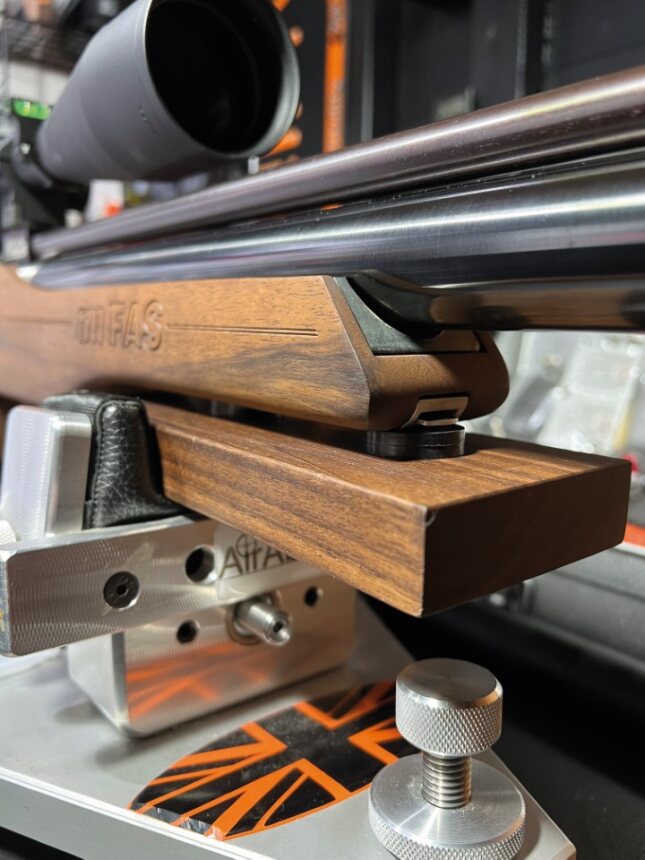
On Two Legs
Bipods are new in town and are now allowed in Light Rifle (LR) and Heavy Rifle (HR). This negates the requirement for a front block, but you must have an appropriate accessory or Picatinny rail to fit the bipod.
Tip: Remember, any bipod (non-adjustable while shooting) and mount weighing under 28oz (800g) will be weighed separately and not counted as part of the rifle weight.
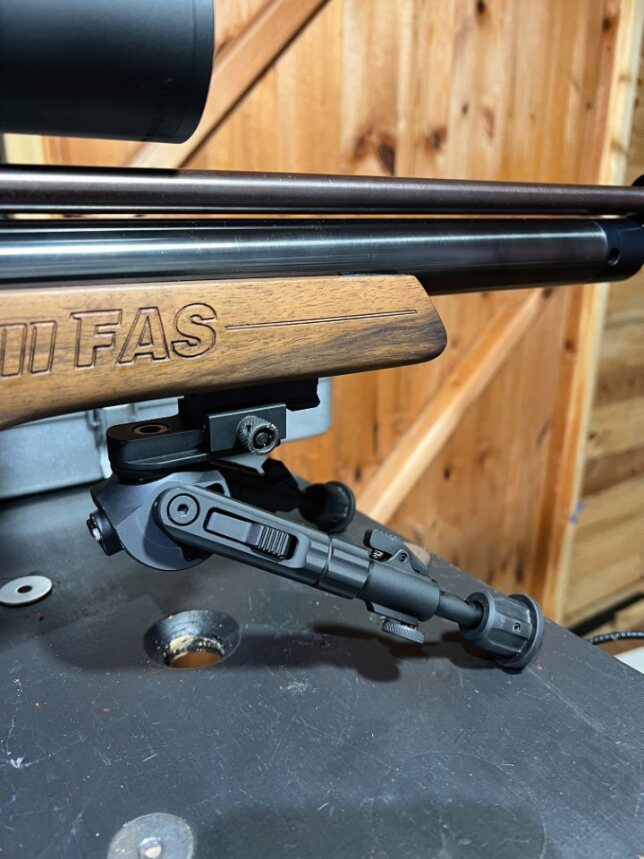
The Trigger
The trigger must have a guard for safety reasons, so that it cannot be knocked and accidentally fired. The trigger guard can be traditional metal, or part of the wooden stock formed round the trigger.
Tip: Pinch posts are widely used to replace the grip. This allows the trigger to be operated with a pinching motion from a metal rod just behind the trigger.
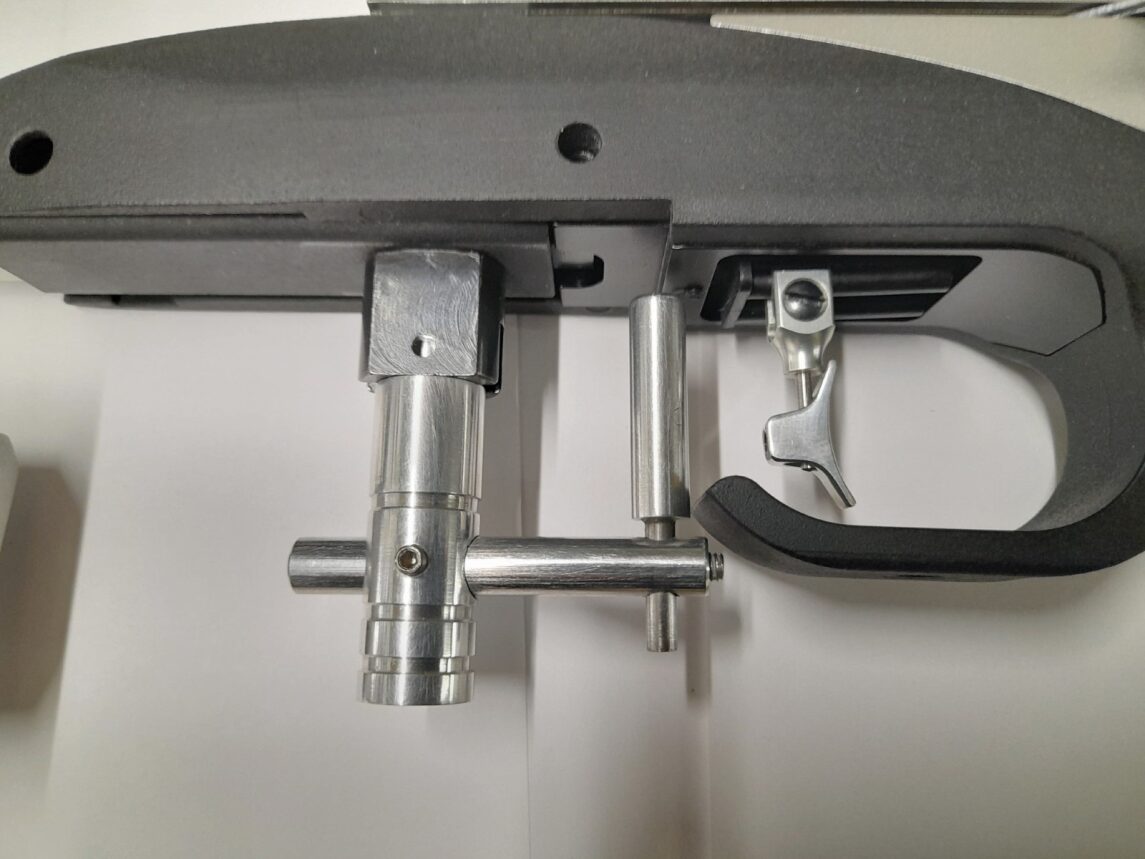
Nobody Wants A Concave Butt
The bottom of the butt of the stock that comes in contact with rear sandbag must be either convex or flat, and must be no wider than 0.98 inch (25mm). It must not be concave because this can grip the back bag and can restrict the rifle from moving freely forward and backward.
Tip: Bag riders can be made or bought online very cheaply and this can fix the issue with a concave stock. On some rifles, you can remove the cheekpiece, turn it upside down and place it under the stock to make a flat bag rider.
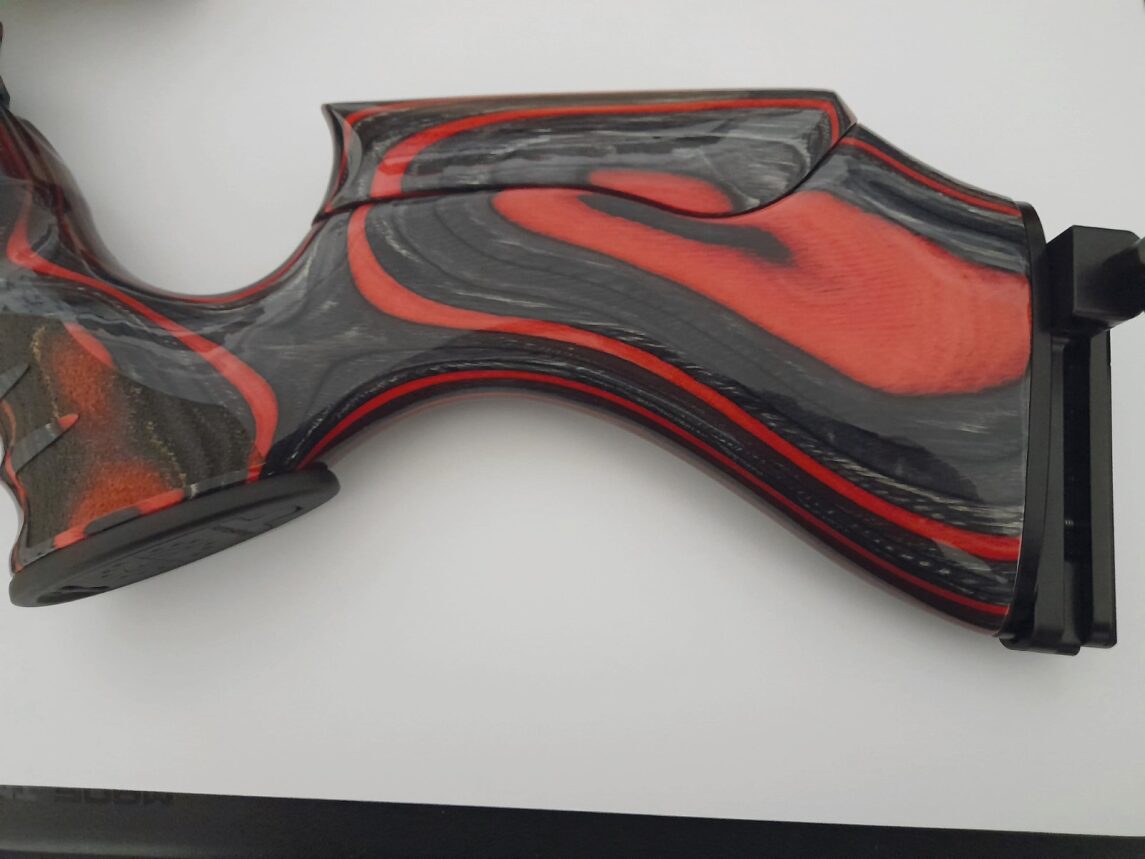
Don’t Be Cheeky
Cheek rests do not normally form part of a custom benchrest stock and this is for two reasons: First, shooters need to get behind the scope without leaning on the rifle and creating extra movement that affect accuracy. Secondly, cheek rests/pieces can weigh upward of 250g in some cases, making it more difficult to get a rifle into LR class if you are using a bigger scope or silencer/barrel weights.
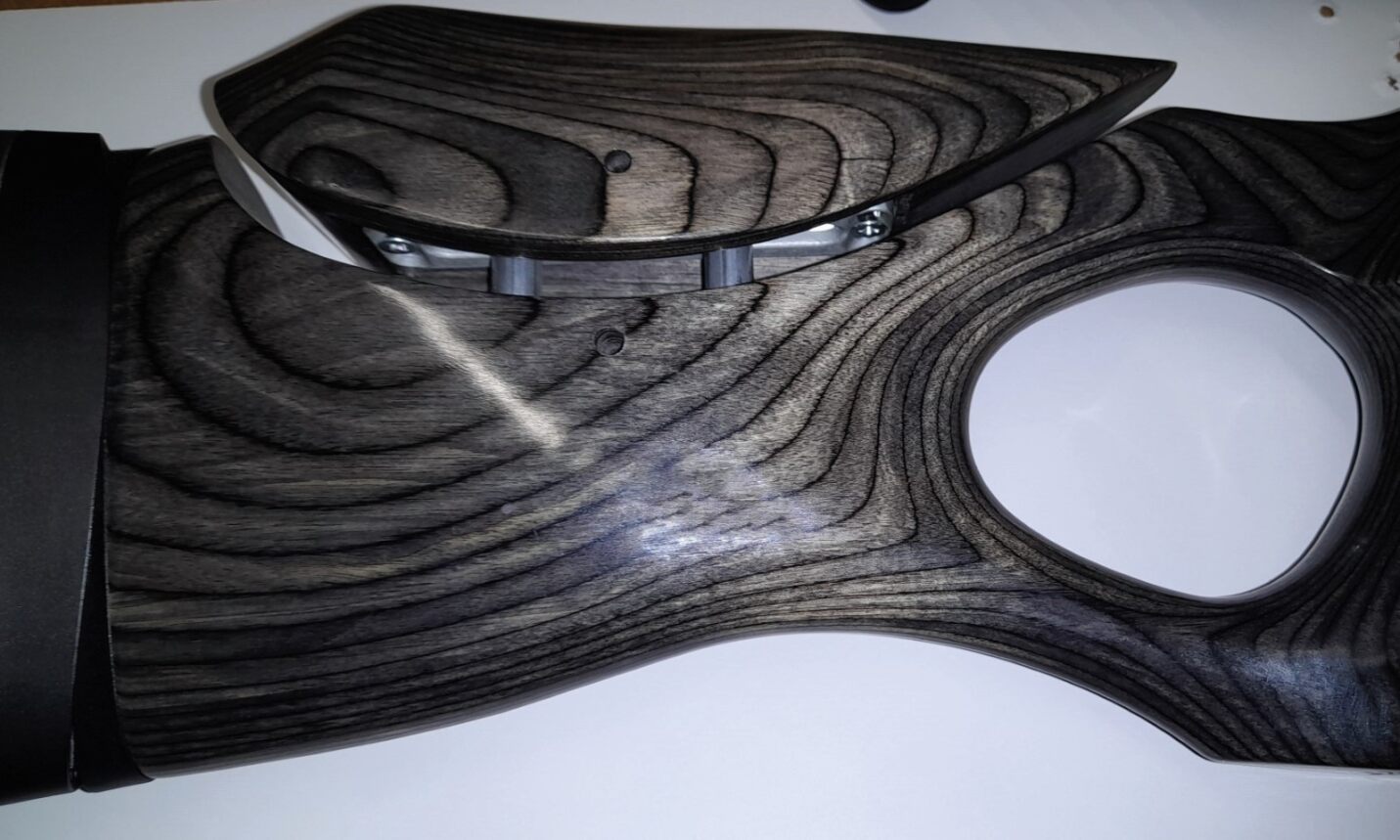
You Will Be Tested
At a competition, your gun stock will be checked for the correct dimensions and weight. At any time during a shoot, your gun can be called in for scrutiny. They will check everything we have just covered above.
Your rifle will also be checked for weight depending on which class you shoot. LR weigh under 10½ lbs or 4762g, and HR weigh under 15lbs, or 6804g.
Remove any fittings that are not required for benchrest shooting eg: hamsters and butt hooks. Even shorter air cylinders can be used to reduce weight. Some shooters still find it hard to get to the desired weight for LR, so they remove material from their stock.
Tip: To remove material from your stock, the best places are under the rifles air cylinder, or from the back of the stock. You will be surprised how much weight can be removed, but don’t take out too much material, or you could compromise the structure of the stock. Weight can always be added, but most shooters use the same rifle for LR and HR classes.
Step Away!
After a 20 minute detail, the Range Officer (RO) will ask you to stop shooting and move away from your rifle. You will then be asked to get up and stand behind your rifle. He will then check that he can move the rifle freely, forward and backward. This indicates that the stock is not being clamped by either the front rest or back bag.
Tip: Make sure you check your stock is the correct size and meets the rules you are shooting under. If you are not sure – ask because you don’t want to be disqualified.
Home-made Or Custom Stocks (pic 7)
Rifle stocks can be made from a variety of materials including wood, metal, plastic or laminate. Some items can easily be made at home to keep costs down, ie; front plates and bag riders. Custom benchrest stocks can be bought. Fitting a custom stock to your gun action is not as straightforward as it sounds. The first thing to make sure of is that it fits the action correctly, and it’s not too tight and pinching, or too loose that it wobbles because this will cause alignment and accuracy issues.
Tip: Fitting the action into a stock and tightening the bolts should be done with a torque wrench to the manufacturer’s specifications. If none are available, tighten it up in stages and test shoot – don’t over-tighten because this will affect accuracy. The stock should be a snug fit and should not come into contact with the air cylinder or barrel – this will also affect your accuracy.
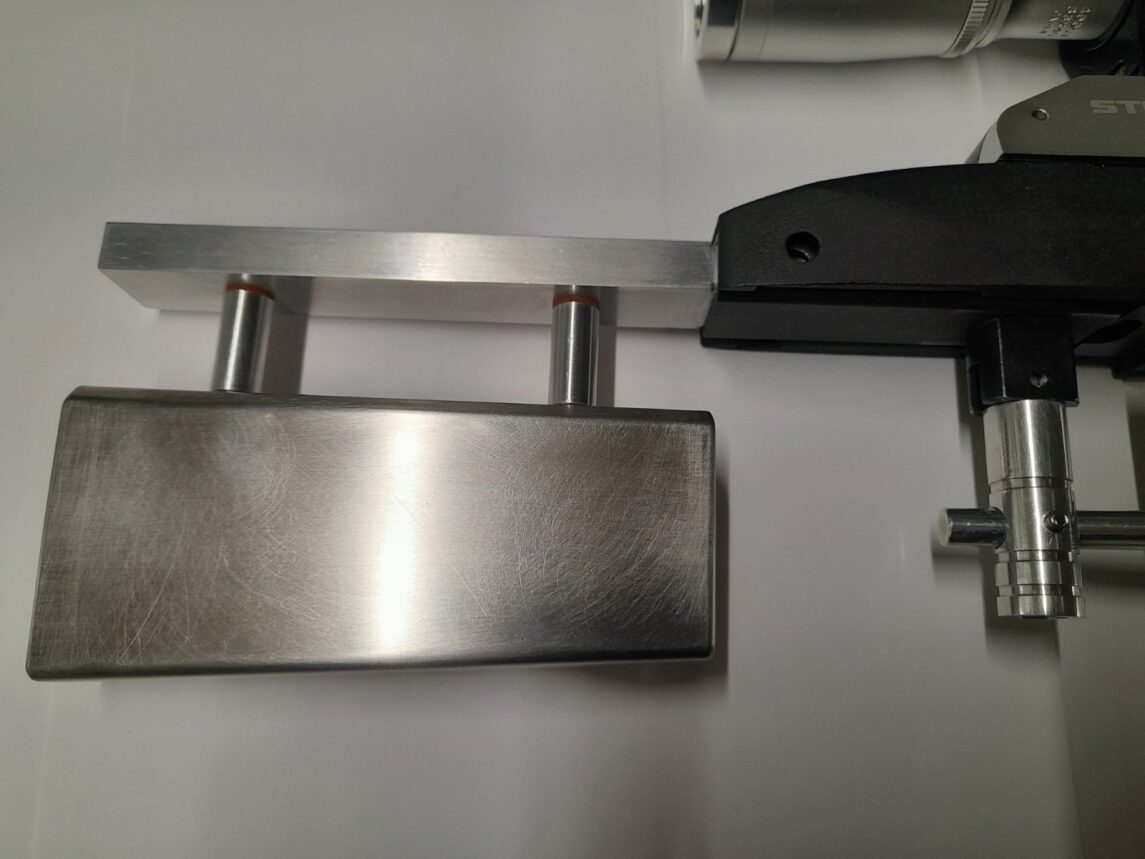
Ordering And Adjusting Stocks
If you’re ordering a custom stock, first weigh your action with everything fitted and let the stock builder know the weight that the new stock must be.
Tip: Don't rush! Take your time when making any changes to your rifle and always test after every change. Write down what you have done and the effect it had on your rifle – that way you will be able to put it back if the change didn’t work. Always clean and look after your equipment after using it. We have had our rifles for years and they still look like new.
Spick And Span
Cleaning your benchrest stock depends on what it’s made from. If its natural wood, I suggest just wiping it over with a damp cloth, but not too wet. If its beech, then a quick wipe over with a stock oil, and if it’s a laminated benchrest stock, I find a wipe over with microfibre cloth with a little silicone gun oil works for us.
Final Words
The last bit of advice we can give to you is to make sure the gun stock fits you. You need to feel comfortable in your shooting position, not struggling to reach around to pull the trigger, or load the rifle.
At the end of the day, the above is just advice. Other benchrest shooters you meet will have their own way of doing things – some you will take on board, and some you will just ignore. It’s what works for you that counts.
Next time, we’ll be diving down the rabbit hole of custom coaxial rests, bipods and back bags – the bedrock of your benchrest gear. Remember, once you have your benchrest gun, you need something to rest it on. This much overlooked area of the sport pays as many dividends as the perfect rifle. So don’t miss Shifu and the Phoenix as we keep trying to get you out there and benchrest shooting.